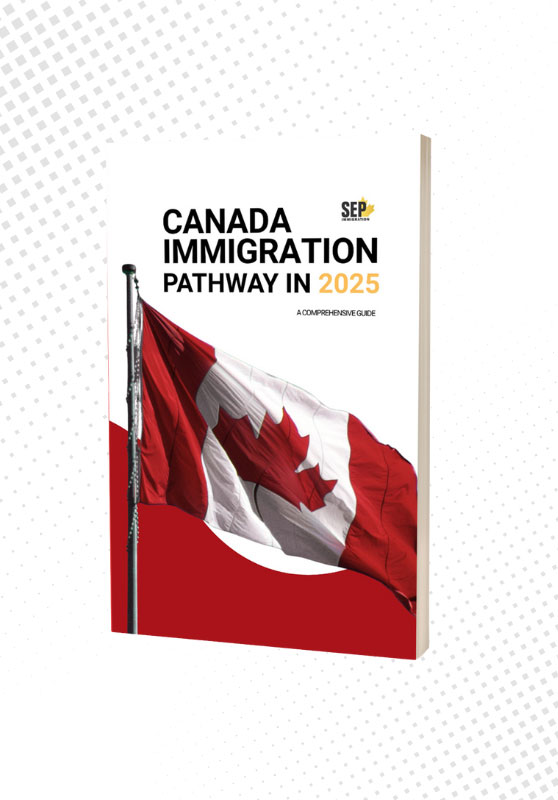Program Delivery Update: National Occupational Classification (NOC)
Canada has updated its job classification system, introducing the National Occupational Classification (NOC). This new framework replaces the previous four-skill type structure (NOC A, B, C, D) with the TEER (Training, Education, Experience, and Responsibilities) system, a more detailed classification aligning with Canada’s economic and immigration policies. This update impacts immigration applications and work eligibility, helping both applicants and employers understand job requirements more precisely.
The National Occupational Classification (NOC) system is used to classify jobs (occupations). Jobs are grouped based on the type of:
- job duties
- work a person does
The 4-skill type category known as NOC A, B, C, D will be replaced by the TEER system. These changes will be incorporated in 2022.
The 6 categories of this system are as follows:
TEER 0: Management occupations.
TEER 1:
- Completion of a university degree (bachelor’s, master’s or doctorate); or Several years of experience in a specific occupation from TEER category 2 (when applicable).
TEER 2:
- Completion of a post-secondary education program of two to three years at community college, institute of technology or CÉGEP; or
- Completion of an apprenticeship training program of two to five years; or
- Occupations with supervisory or significant safety (police officers and firefighters) responsibilities; or
- Several years of experience in a specific occupation from TEER category 3 (when applicable).
TEER 3:
- Completion of a post-secondary education program of less than two years at community college, institute of technology or CÉGEP; or
- Apprenticeship training of less than 2 years; or
- More than six months of on-the-job training, training courses or specific work experience with some secondary school education; or
- Several years of experience in a specific occupation from TEER category 4 (when applicable).
TEER 4:
- Completion of secondary school; or
- Several weeks of on-the-job training with some secondary school education; or
- Several years of experience in a specific occupation from TEER category 5 (when applicable).
TEER 5:
- Short work demonstration and no formal educational requirements.
Updated Instructions for Immigration Programs
As NOC 2021 becomes the standard for Canadian immigration, understanding the updated requirements under this classification is crucial for applicants across various programs.

- Language Proficiency Requirements
For the Canadian Experience Class (CEC), language proficiency now depends on the TEER category of the primary occupation. Applicants must meet Canadian Language Benchmarks (CLB) for English or Niveaux de compétence linguistique canadiens (NCLC) for French, aligning their language skills with the occupational level for effective integration into the Canadian workforce. Language test results from approved organizations are valid for two years, and minimum proficiency levels vary by TEER level.
For the Federal Skilled Trades Class (FSTC), applicants must meet minimum language requirements based on the specific trade, ensuring they can function effectively in Canada’s work environment.
- Work Experience Requirements
Work experience is a key criterion across immigration categories, with specific requirements:
–Canadian Experience Class (CEC): Applicants must have at least one year of skilled work experience in Canada within the last three years in a TEER 0, 1, 2, or 3 occupation. Self-employment and unauthorized work do not count toward this requirement. The work performed should align closely with the TEER category to showcase skills relevant to Canada’s labor market.
–Federal Skilled Worker Program (FSWP): Applicants need at least one year of continuous, full-time paid work experience in a skilled occupation (now classified under TEER 0, 1, or 2). Work experience points are awarded based on job relevance, duration, and recentness, with maximum points for six or more years of experience within the last ten years.
– Federal Skilled Trades Class (FSTC): Applicants must have at least two years of skilled trade experience within the last five years, showing they can fulfill their role effectively in Canada’s workforce.
- Education Requirements and Points Allocation
Under the Federal Skilled Worker Program (FSWP), Education points are awarded based on the highest level of education achieved. Canadian educational credentials or equivalent foreign credentials assessed by a designated organization are eligible. The points vary, with maximum points awarded for doctoral degrees and fewer points for lower educational levels. This evaluation aligns with the TEER system’s focus on training and experience to better match Canada’s economic needs.
- Arranged Employment and Employment and Social Development Canada (ESDC)
Arranged Employment plays an important role in the FSWP, enabling applicants to earn points for having a valid job offer from a Canadian employer. The job offer must be continuous, full-time, and non-seasonal for at least one year after obtaining permanent residence. Employment and Social Development Canada (ESDC) evaluates job offers through the Labour Market Impact Assessment (LMIA) process, verifying the genuineness of the offer and its alignment with TEER categories. ESDC ensures that the offer benefits the Canadian labor market and that no qualified Canadians are available for the role.
- Adaptability Factors
For FSWP applicants, additional points are awarded for factors that improve their adaptability to life in Canada. Points can be earned for previous Canadian study or work experience, arranged employment, or having relatives in Canada. These factors increase the likelihood of successful integration, with a maximum of ten points awarded in this category.
- Special Considerations for Out-of-Status Construction Workers in the Greater Toronto Area (GTA)
A unique public policy allows certain out-of-status construction workers in the GTA to apply for permanent residence. To qualify, applicants must have entered Canada legally, lived in Canada for at least five years, and possess significant work experience in the construction industry. A referral letter from the Canadian Labour Congress (CLC) is required to support their application.
- Application Processing at the Centralized Intake Office (CIO)
The Centralized Intake Office (CIO) manages non-Express Entry economic class applications, including the Provincial Nominee Program (PNP) and Start-up Business Class. Applications are first checked for completeness, and incomplete applications are returned. Complete applications are entered into the Global Case Management System (GCMS), and processing fees are recovered, allowing for efficient tracking and management of each application.
In a Nutshell
This update under the NOC 2021 clarifies the qualifications needed for each occupation, helping applicants align their skills and experience with Canadian standards more effectively. The TEER system’s structured approach to training, education, experience, and responsibilities aligns applicants’ profiles with Canada’s economic priorities, supporting a smooth transition for new immigrants into the workforce.
2025 Update: Immigration Rules and NOC Developments
Some important immigration rules shifted in 2025, affecting applicants and their families in a few key ways. The changes reflect adjustments in how Canada manages its programs and evaluates candidates.
No More CRS Points for Job Offers in Express Entry
As of March 25, 2025, job offers no longer add points to your Express Entry profile. Before this change, an offer could give you a 50 or 200-point advantage, depending on the job type. That’s no longer the case. Still, a job offer remains essential for eligibility under specific streams, like the Federal Skilled Trades Program. It might not affect your ranking now, but you’ll still need it in some cases.
New Limits on Open Work Permits for Family Members
Another shift came in January. Spouses of workers in higher-skilled occupations—mainly in TEER 0 and 1, and some TEER 2 and 3—can still apply for open work permits. Others can’t. Dependent children are no longer included in this option. These restrictions have made it harder for some families to move together under the same permit umbrella.
Immigration Levels Plan: 2025–2027
Canada is aiming to welcome 395,000 new permanent residents in 2025. There’s a clear emphasis on temporarily granting permanent status to people already living in the country. At the same time, the federal government is tightening limits on temporary residents, aiming to bring their share of the population down to 5% by late 2026. That effort includes placing caps on international student permits and scaling back work permit options.
Ongoing Updates to the NOC System
The National Occupational Classification (NOC) is still evolving. Employment and Social Development Canada and Statistics Canada have kept updating it to reflect changing work patterns nationwide. These updates are technical, but they matter—especially if your job code is being reassigned or redefined.
Why choose us?
We have been helping many applicants to become permanent residents for years and we have a high success rate. Our clients from almost 20 different countries have experienced this with us and you can be the next successful one. We know how to prepare documents and how to make your immigration process smooth and easy for you. Contact us HERE to start the process today!
If you are not a Canadian Permanent Resident yet and you are not sure what the best way for you to immigrate to Canada is, please fill out our assessment form HERE and we will get back to you with your possible options.






